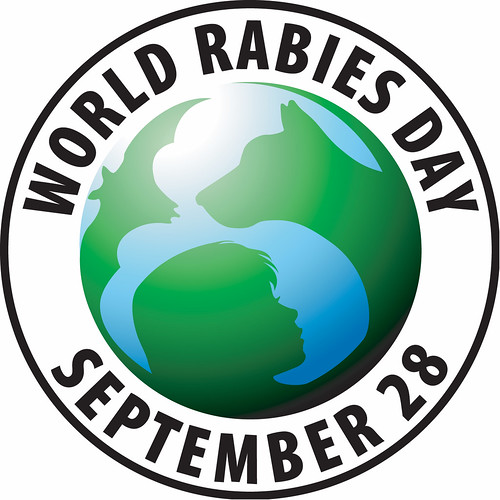
This year’s World Rabies Day theme “Together Against Rabies” is appropriate given the number and diversity of organizations around the world focused on preventing the spread of rabies in people, pets, livestock and wildlife.
Since 2007, the Global Alliance for Rabies Control has sponsored World Rabies Day on September 28 to promote rabies awareness and reduce rabies transmission. For its part, the APHIS-Wildlife Services (WS) program has been working cooperatively with local, State, and Federal governments, international partners, universities and others since 1995 to prevent the spread of rabies in wildlife in North America.
In the United States, wildlife accounts for approximately 92 percent of all reported rabies cases. The WS National Rabies Management Program distributes more than 6 million oral rabies vaccination (ORV) baits each year for raccoons, skunks, gray fox and coyotes in 15 states and conducts rabies surveillance in those states as well as 9 others. The goal is to prevent the further spread of wildlife rabies and eventually eliminate terrestrial rabies in the United States.
During August, September and October of this year, WS rabies experts again are distributing Raboral V-RG® ORV baits by fixed-wing aircraft, helicopter and vehicle to help vaccinate raccoons and skunks for rabies. They are also continuing field trials to test the effectiveness and safety of an alternative oral rabies vaccine called ONRAB. In addition to these activities, here are a few other accomplishments WS and its partners are celebrating this World Rabies Day:
- The WS raccoon ORV program in the eastern United States has successfully created a barrier against the westward spread of raccoon rabies beyond the Appalachian Mountains.
- There have been no cases of domestic dog-coyote variant rabies in the United States since 2004, with a rabies-free declaration by the World Health Organization in 2007. This is in large part due to a successful ORV baiting program in South Texas led by WS and the Texas Department of State Health Services.
- There has only been one case of Texas gray fox variant rabies since 2009 due to a gray fox ORV program in West-Central Texas led by WS and the Texas Department of State Health Services.
- Promising results and high vaccination rates from the first WS ONRAB field trial in West Virginia in 2011 lead to similar efforts in West Virginia and new trials in New Hampshire, Vermont, New York and Ohio in 2012. Continued success and positive results has led to the distribution of about 1.7 million ONRAB baits by WS rabies biologists in 5 states this year as part of continued field trials.
- In cooperation with the Centers for Disease Control and Prevention and state agriculture, health, and fish and wildlife agencies, WS continues to expand the use of the direct rapid immunohistochemical test (dRIT), a rapid rabies diagnostic test that can be conducted by wildlife biologists. From 2005-2013, WS tested more than 63,000 animals using the dRIT and confirmed 1,172 were rabid. The dRIT continues to be an integral tool in wildlife rabies management, allowing for sound decisions in real-time based on the best available rabies surveillance data.
Visit our website for more information on the WS National Rabies Management Program and research.
